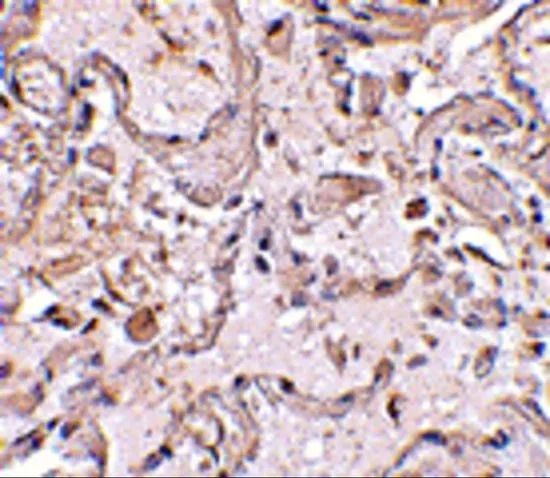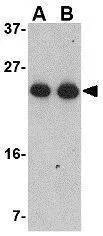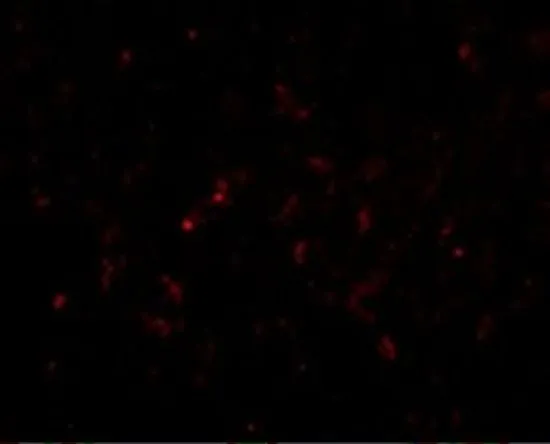
IHC-P analysis of human lung tissue using GTX31766 GSTP1 antibody. Working concentration : 2.5 microg/ml
GSTP1 antibody
GTX31766
ApplicationsWestern Blot, ELISA, ImmunoHistoChemistry, ImmunoHistoChemistry Paraffin
Product group Antibodies
ReactivityHuman, Mouse, Rat
TargetGSTP1
Overview
- SupplierGeneTex
- Product NameGSTP1 antibody
- Delivery Days Customer9
- Application Supplier NoteWB: 0.5 - 1 microg/mL. IHC-P: 2.5 microg/mL. *Optimal dilutions/concentrations should be determined by the researcher.Not tested in other applications.
- ApplicationsWestern Blot, ELISA, ImmunoHistoChemistry, ImmunoHistoChemistry Paraffin
- CertificationResearch Use Only
- ClonalityPolyclonal
- Concentration1 mg/ml
- ConjugateUnconjugated
- Gene ID2950
- Target nameGSTP1
- Target descriptionglutathione S-transferase pi 1
- Target synonymsdeafness, X-linked 7; DFN7; epididymis secretory protein Li 22; FAEES3; fatty acid ethyl ester synthase III; glutathione S-transferase P; GST class-pi; GST3; GSTP; GSTP1-1; HEL-S-22; PI
- HostRabbit
- IsotypeIgG
- Protein IDP09211
- Protein NameGlutathione S-transferase P
- Scientific DescriptionGlutathione S-transferases (GSTs) are a family of enzymes that play an important role in detoxification by catalyzing the conjugation of many hydrophobic and electrophilic compounds with reduced glutathione. Based on their biochemical, immunologic, and structural properties, the soluble GSTs are categorized into 4 main classes: alpha, mu, pi, and theta. This GST family member is a polymorphic gene encoding active, functionally different GSTP1 variant proteins that are thought to function in xenobiotic metabolism and play a role in susceptibility to cancer, and other diseases. [provided by RefSeq, Jul 2008]
- ReactivityHuman, Mouse, Rat
- Storage Instruction-20°C or -80°C,2°C to 8°C
- UNSPSC12352203
References
- The immunohistochemical and histologic effects of contrast medium on uterus, fallopian tubes and ovaries, given during hysterosalpingography: rat study. Pek E et al., 2020 Dec 4, J Turk Ger Gynecol AssocRead more


